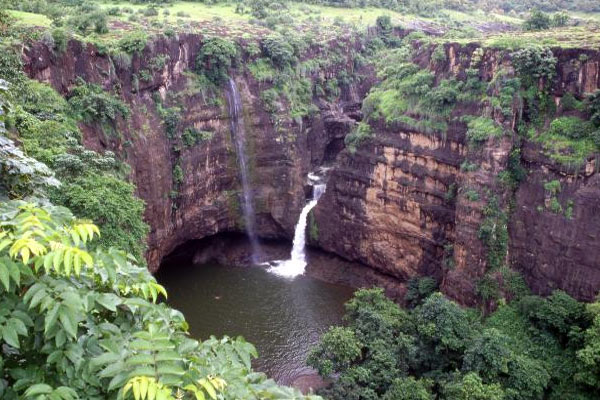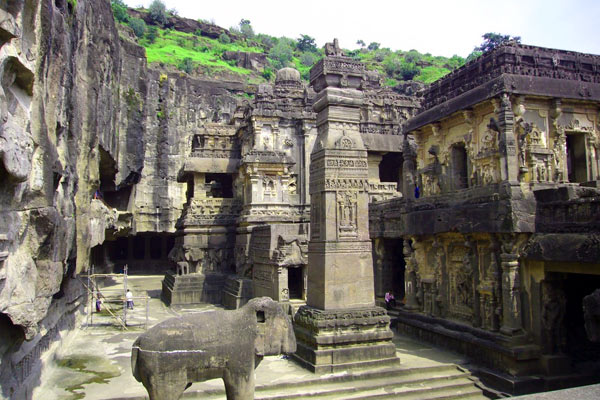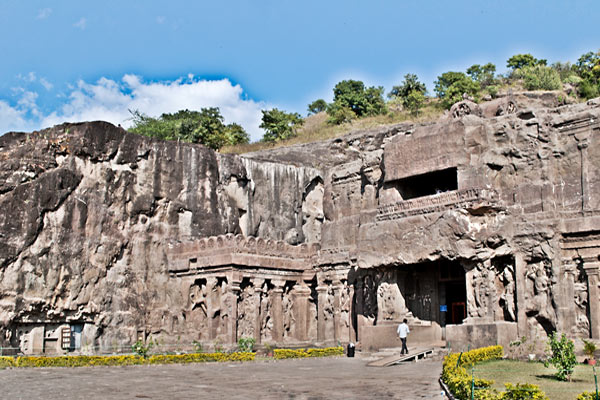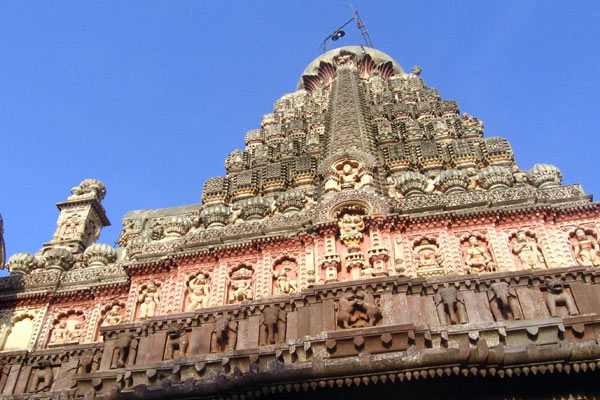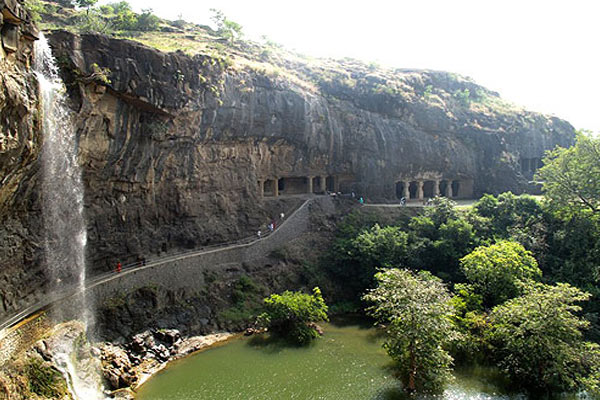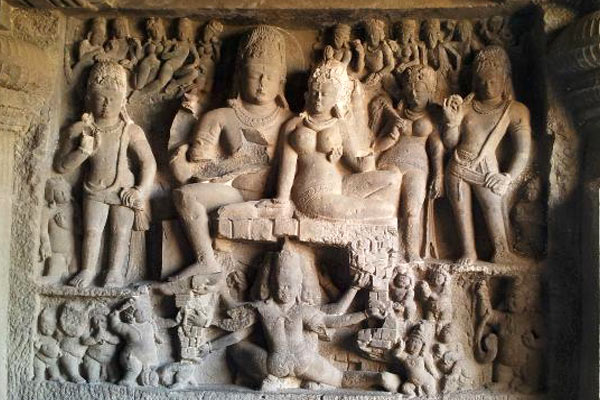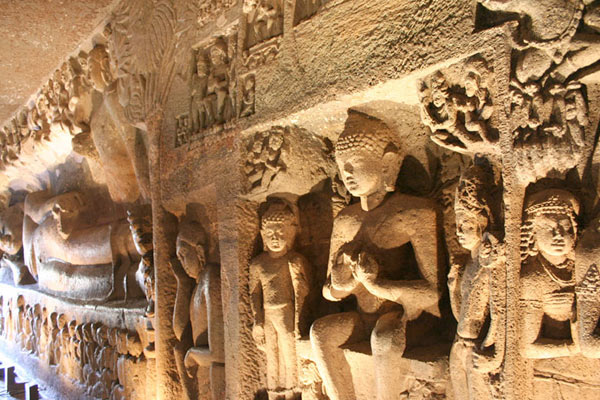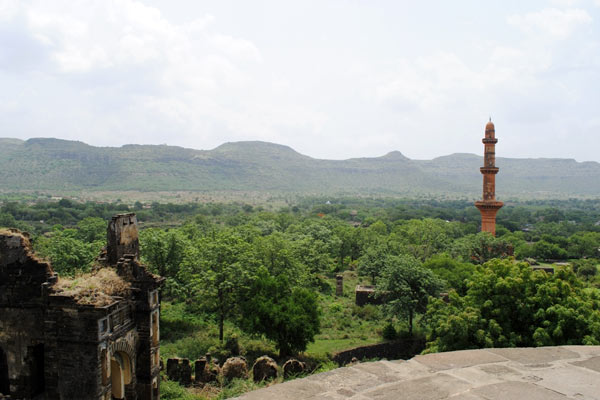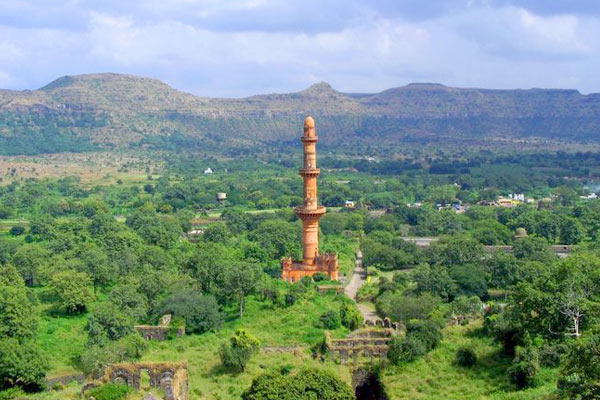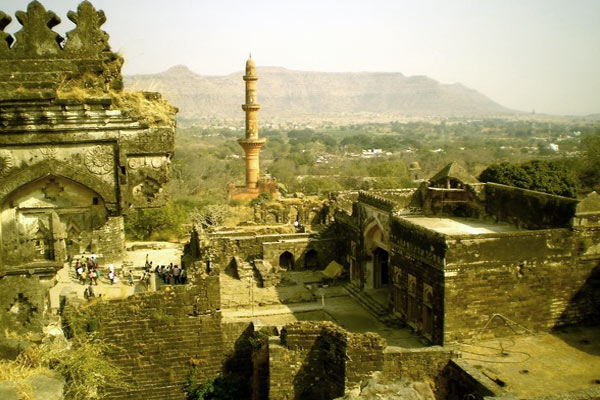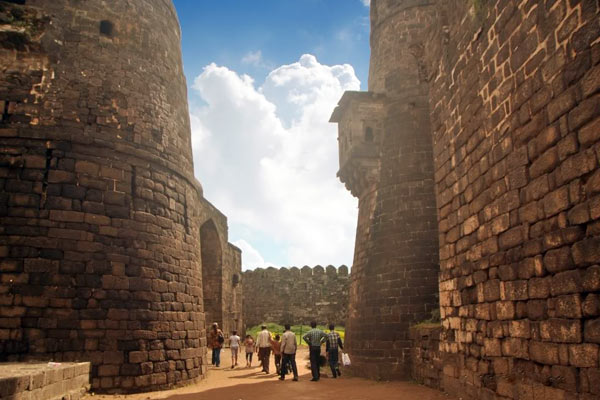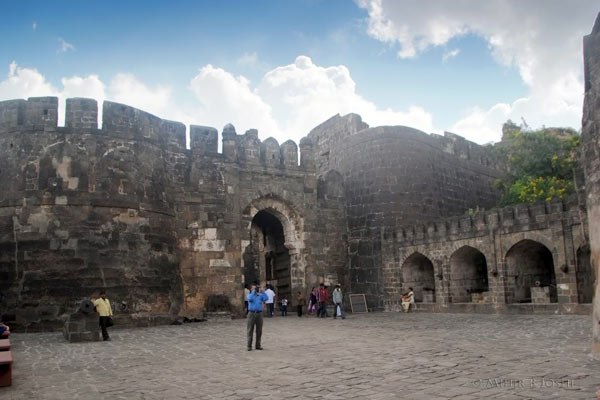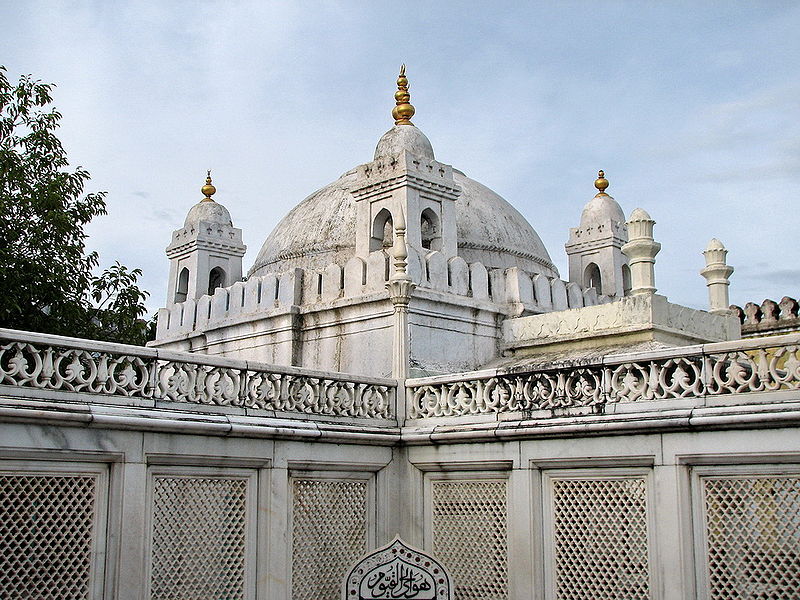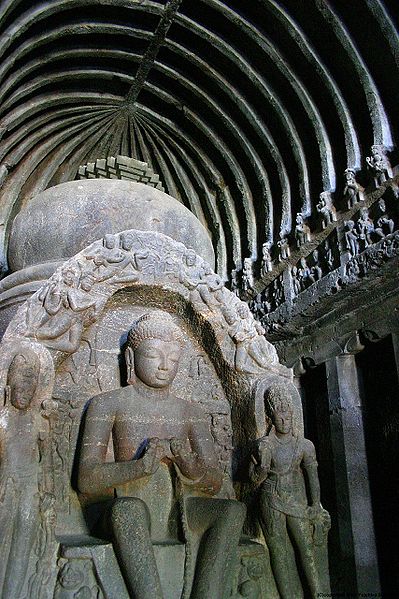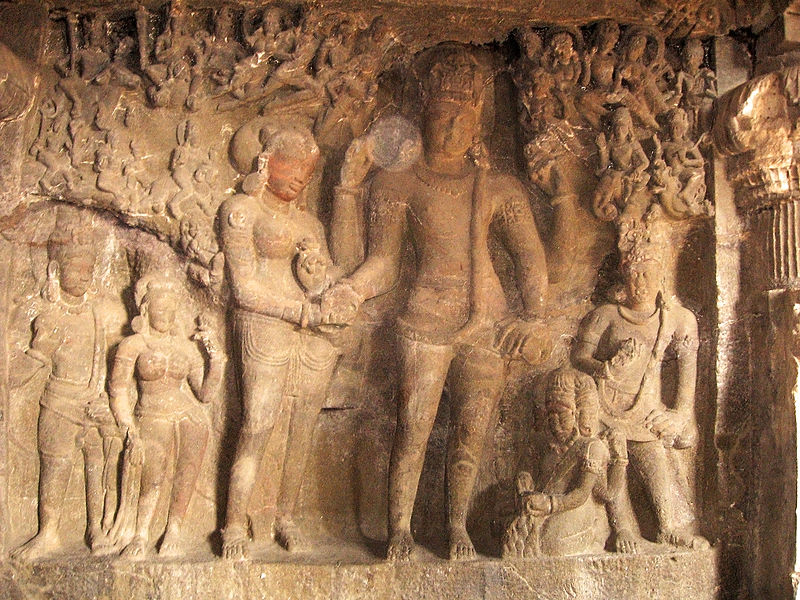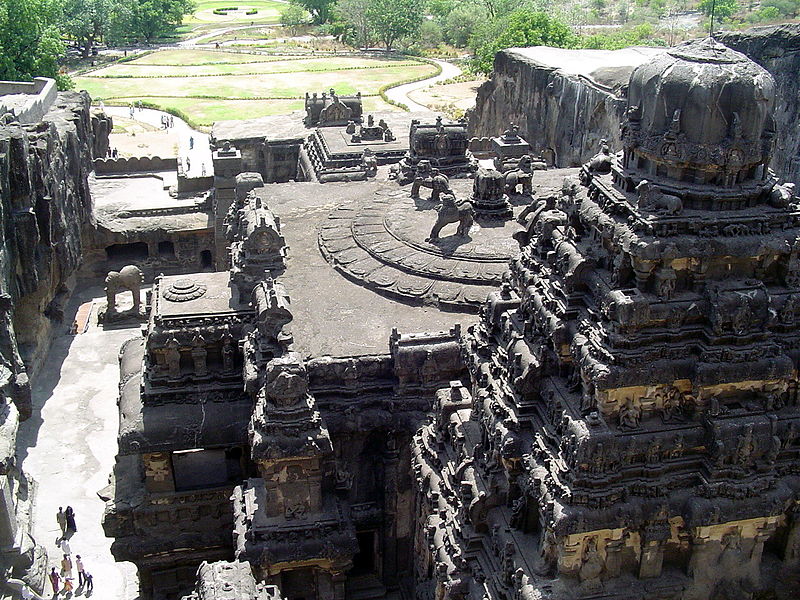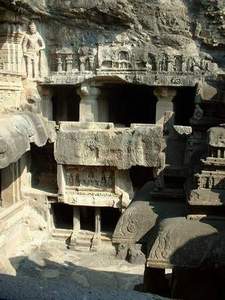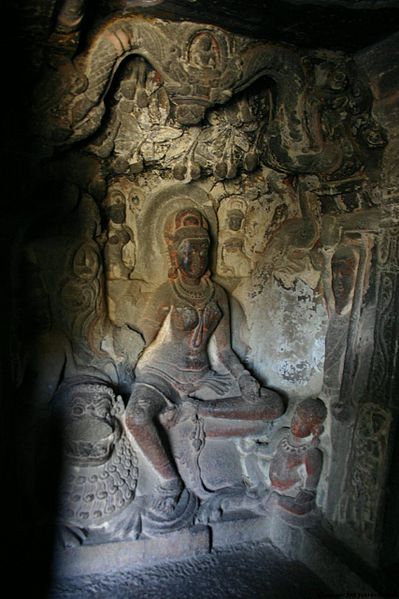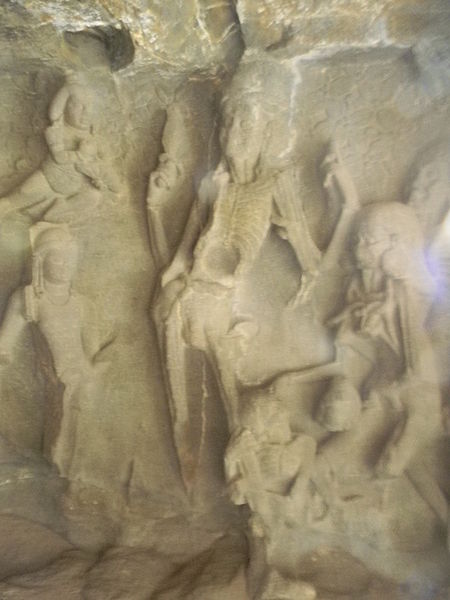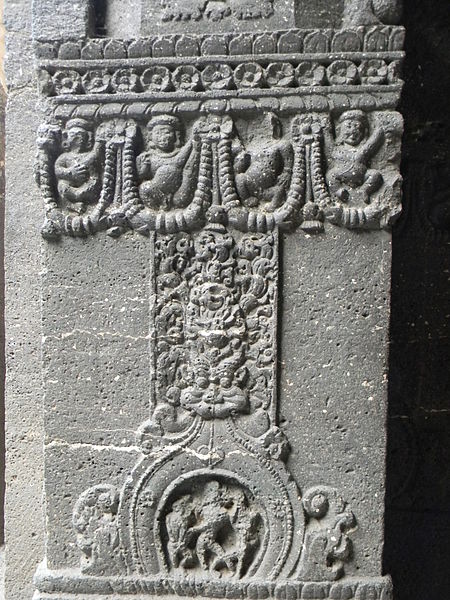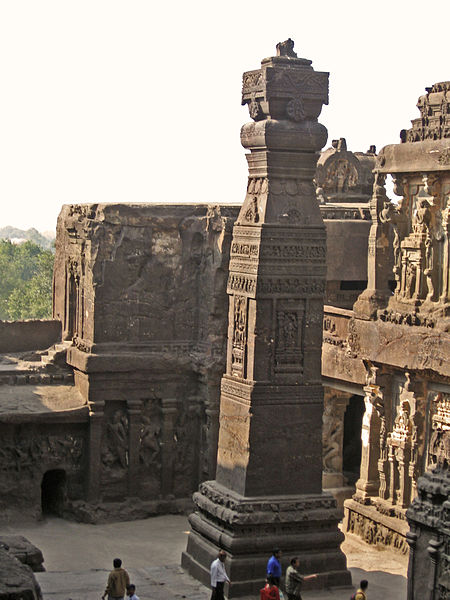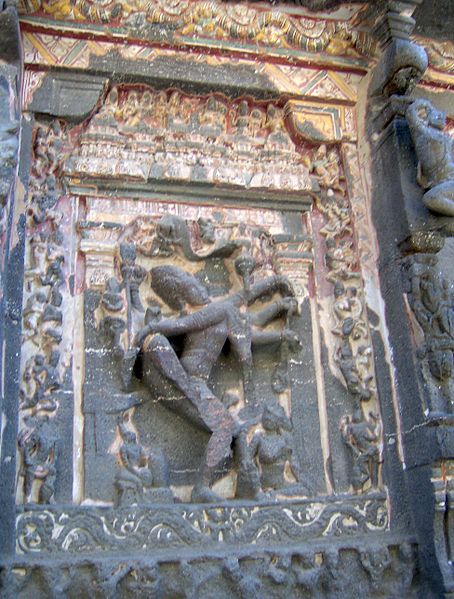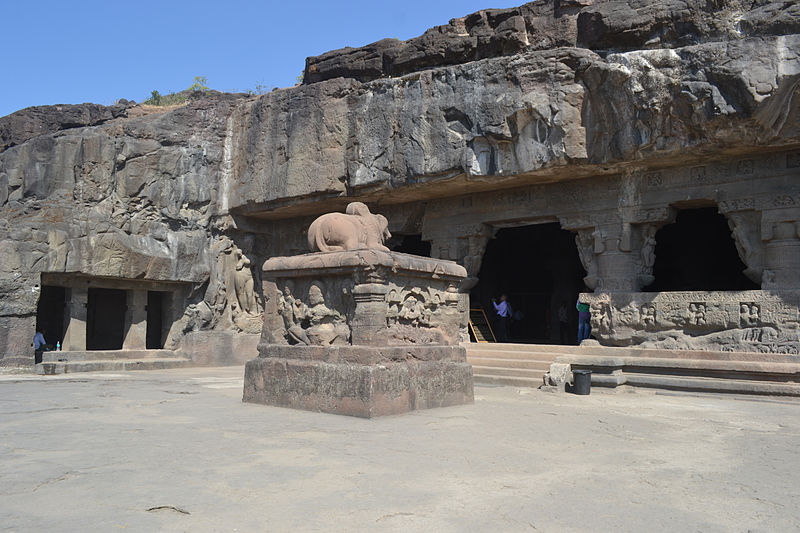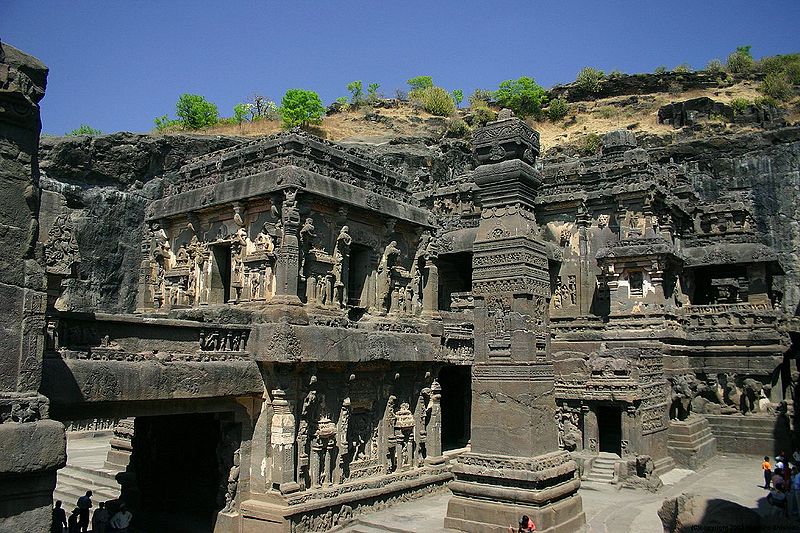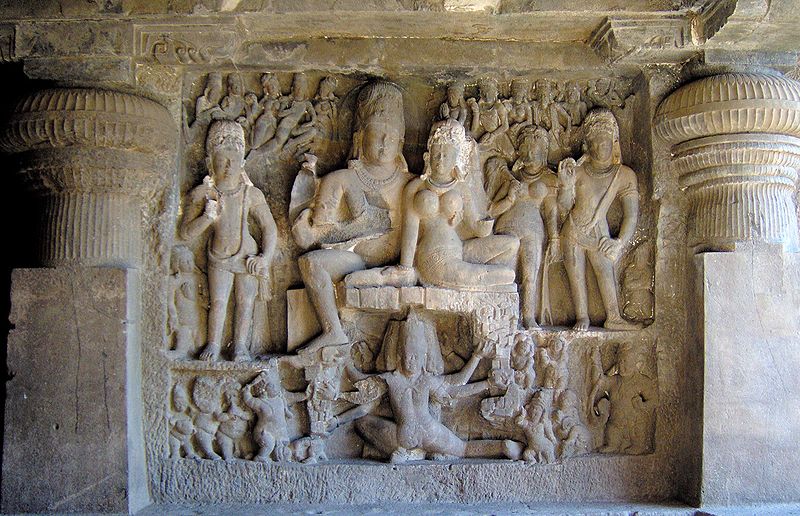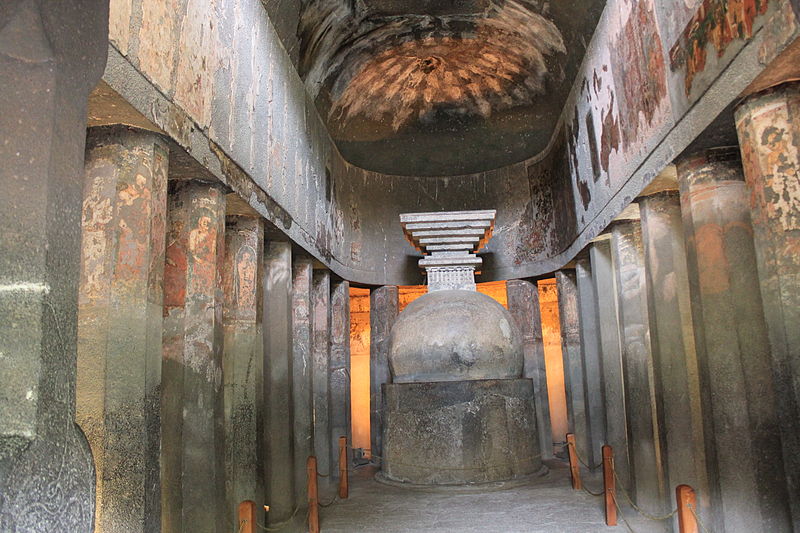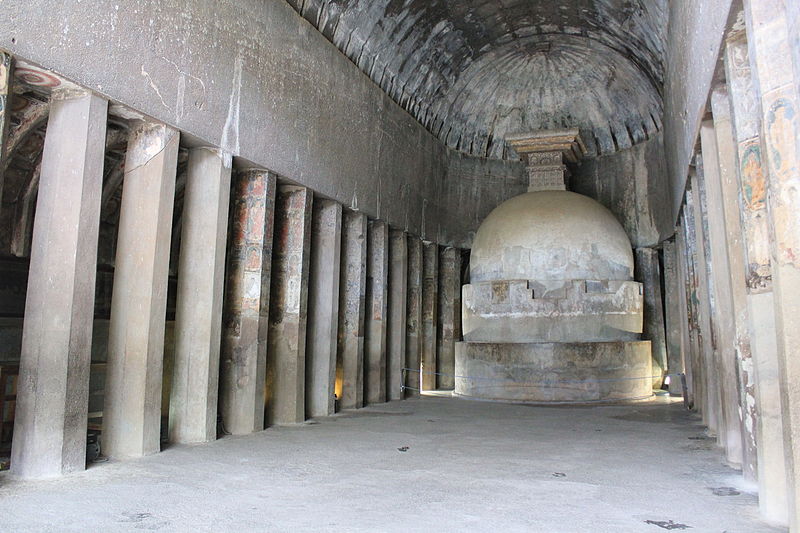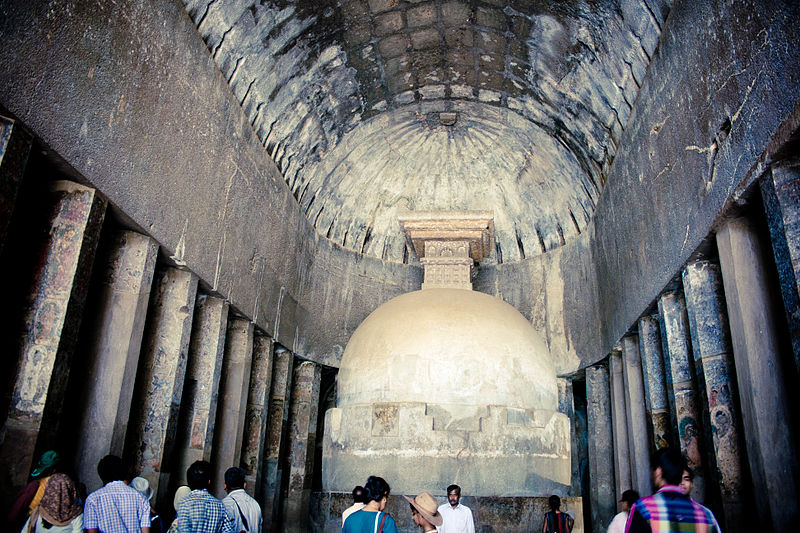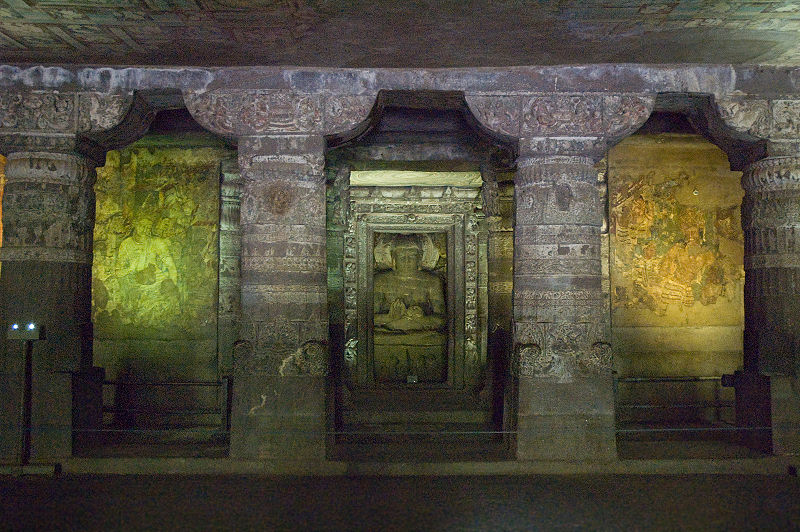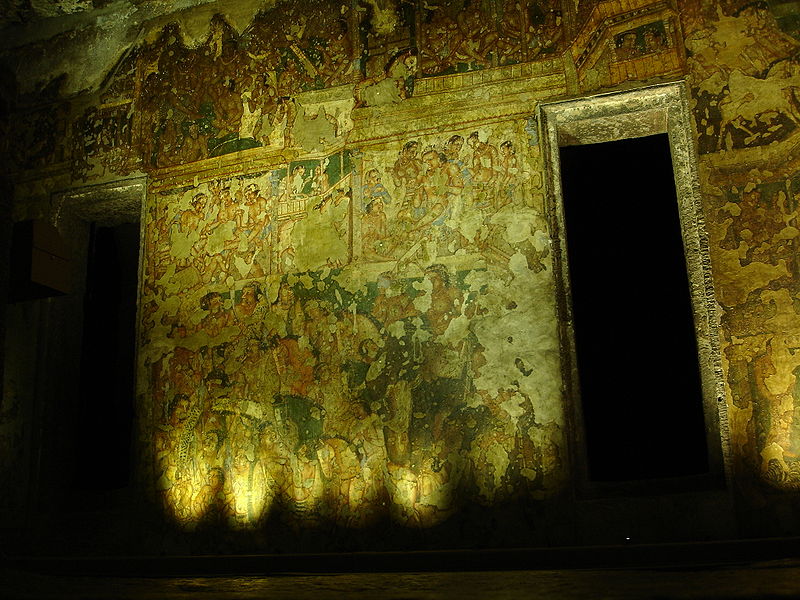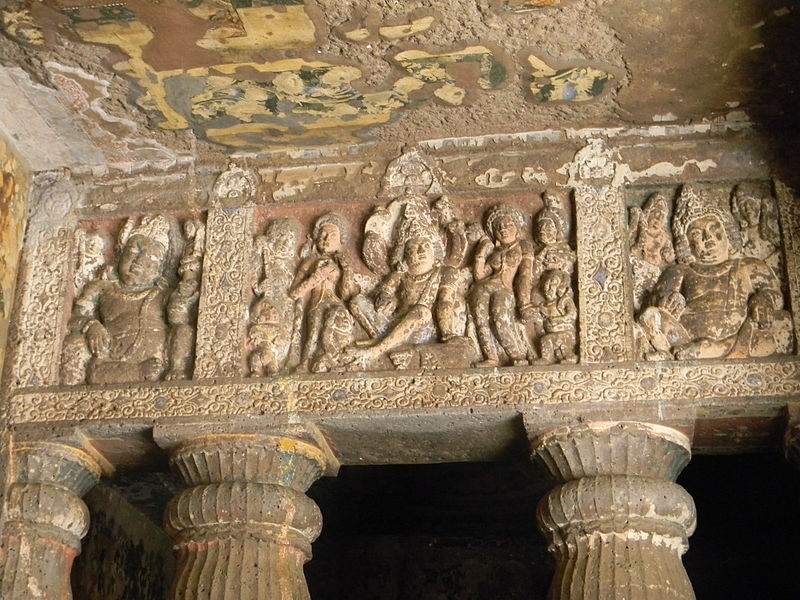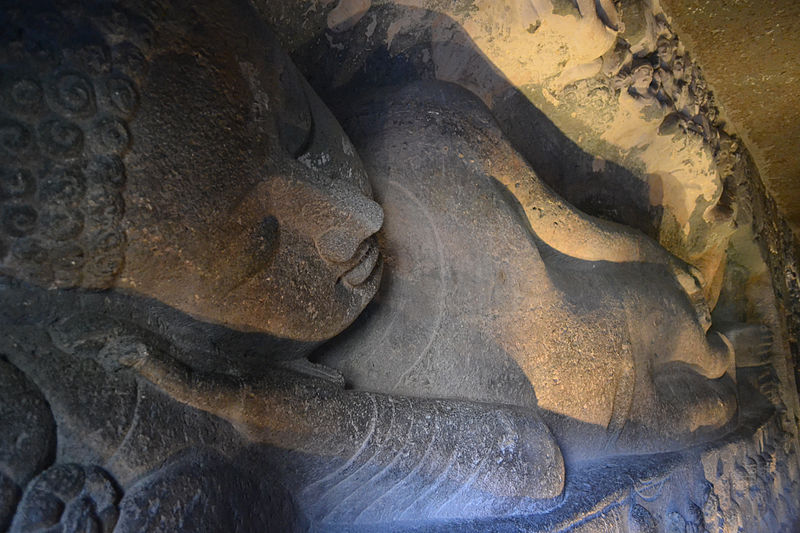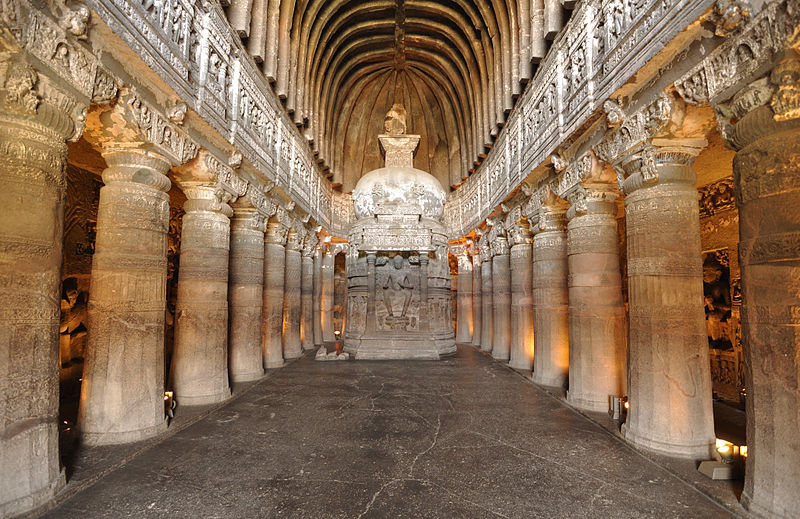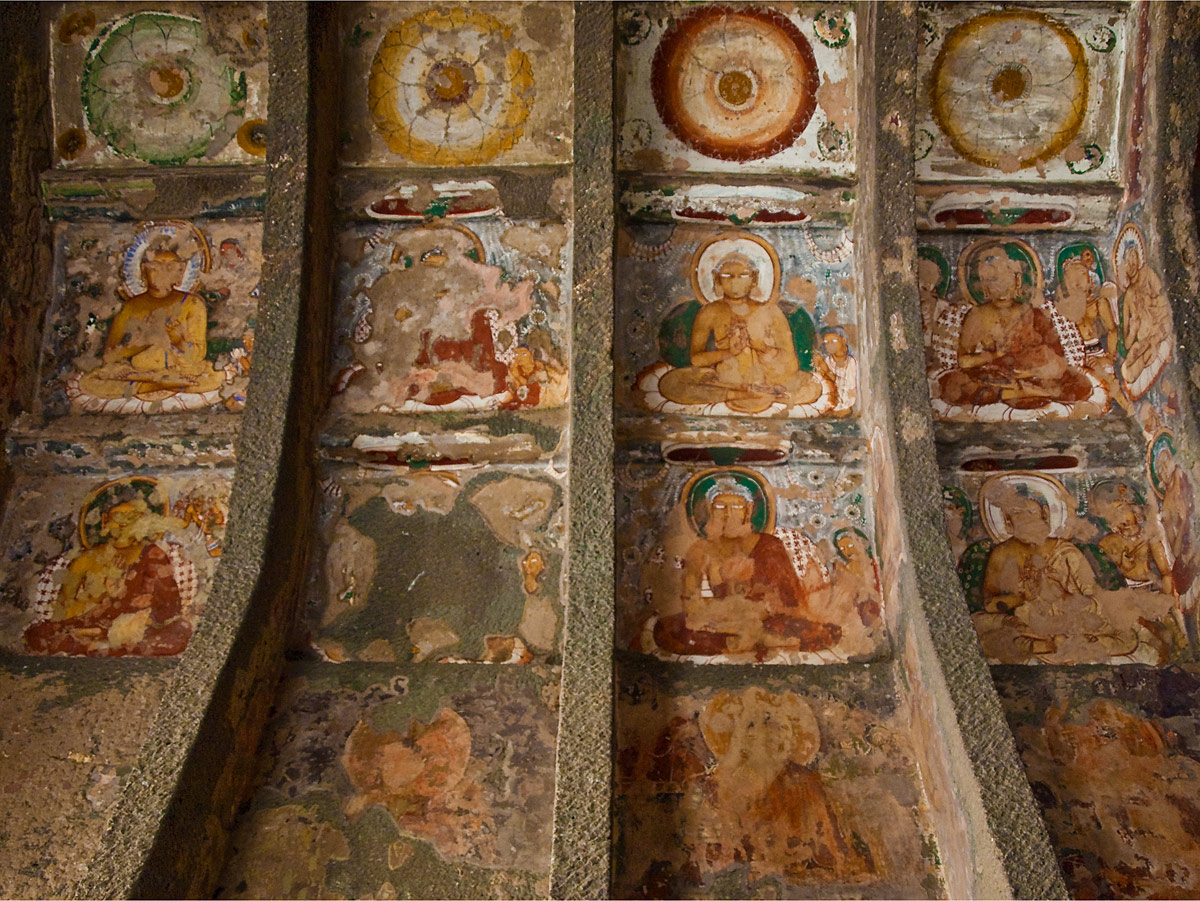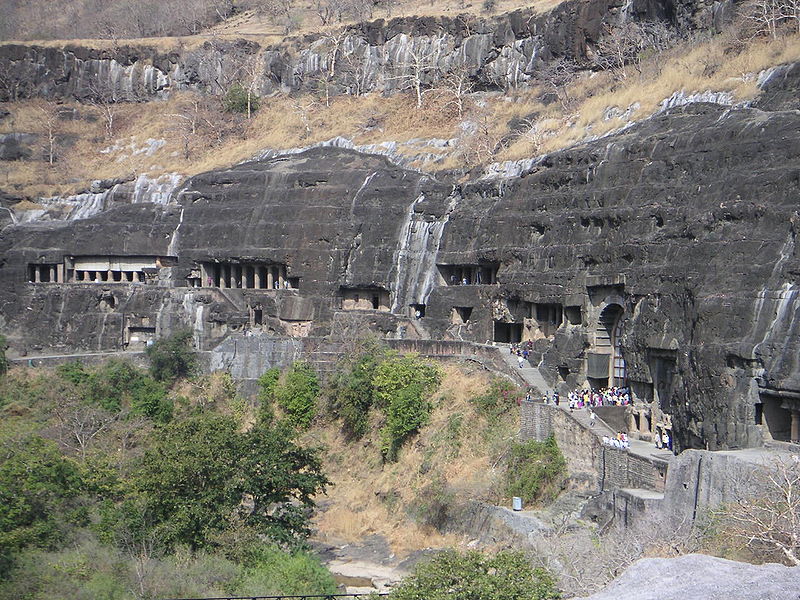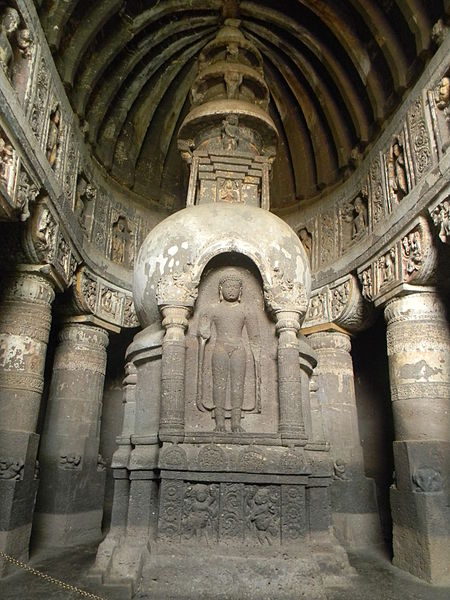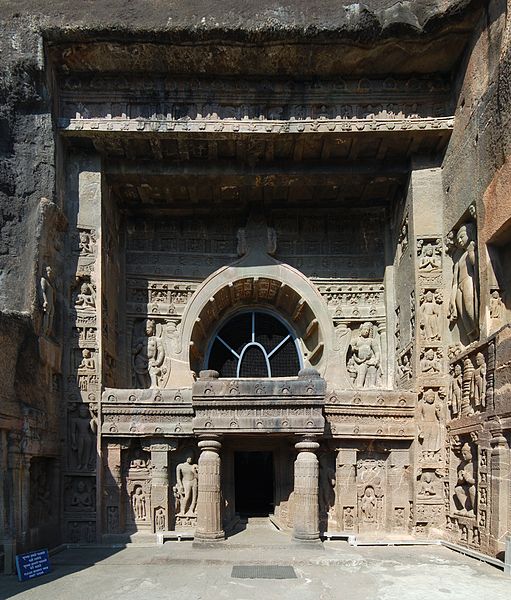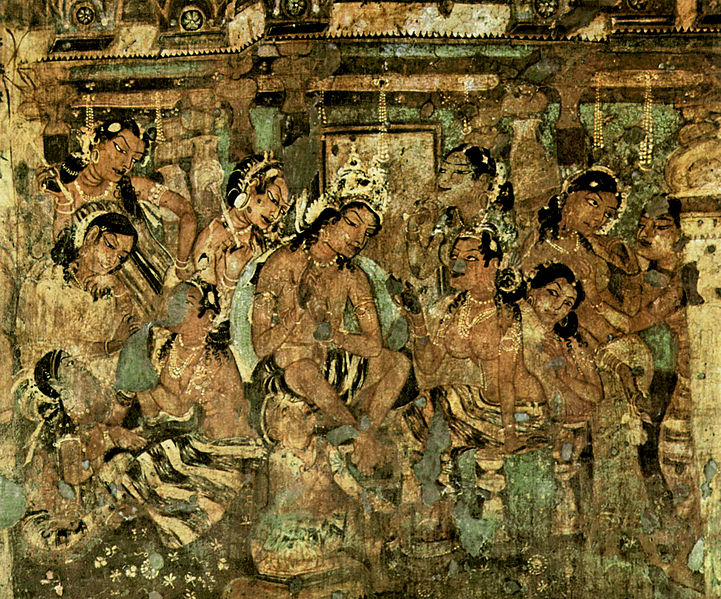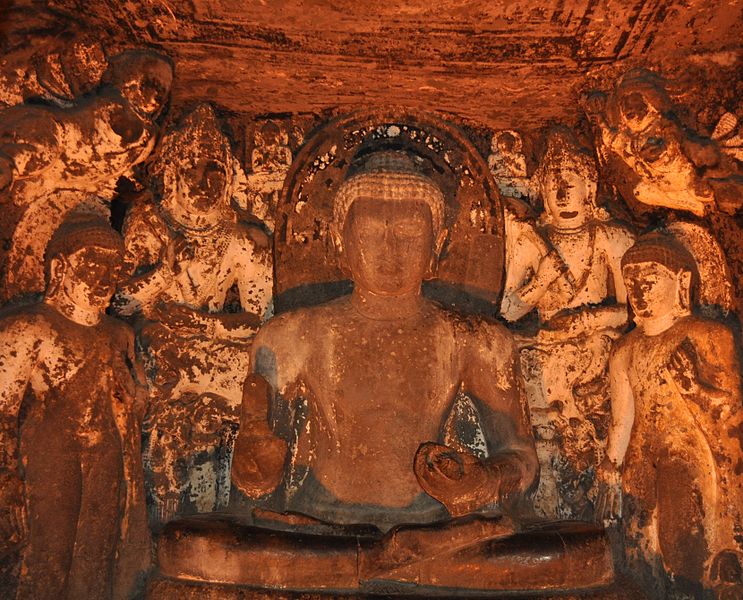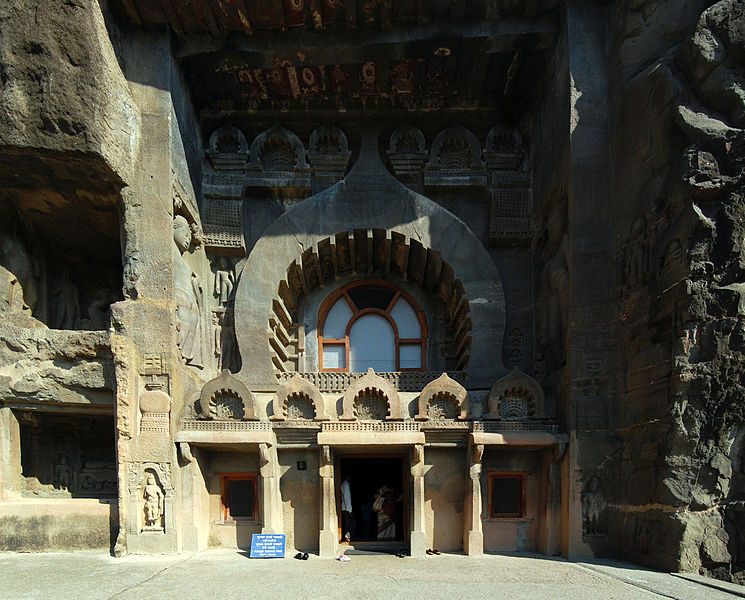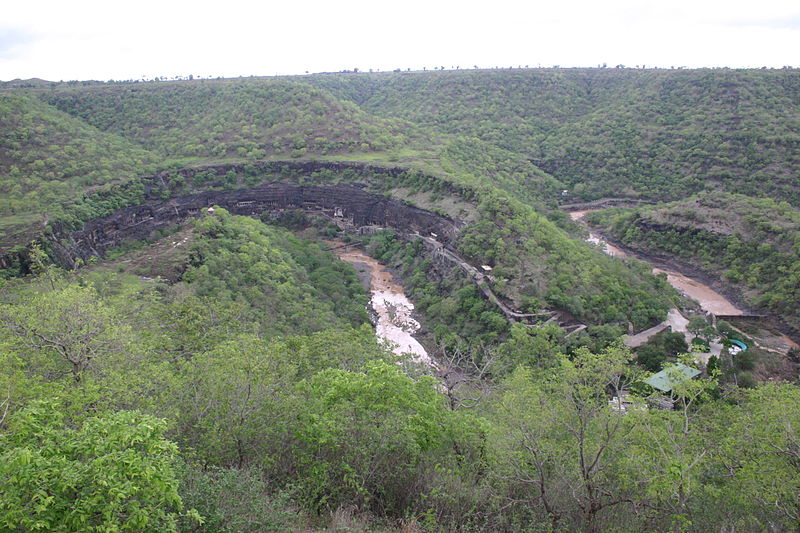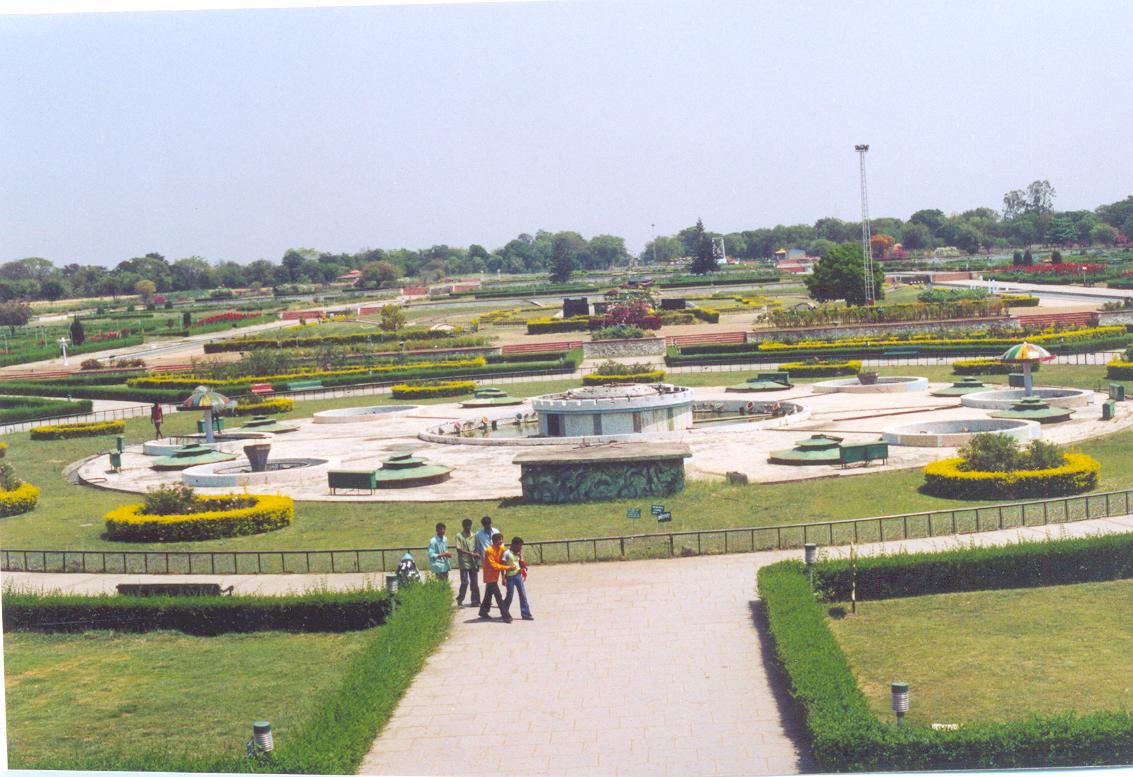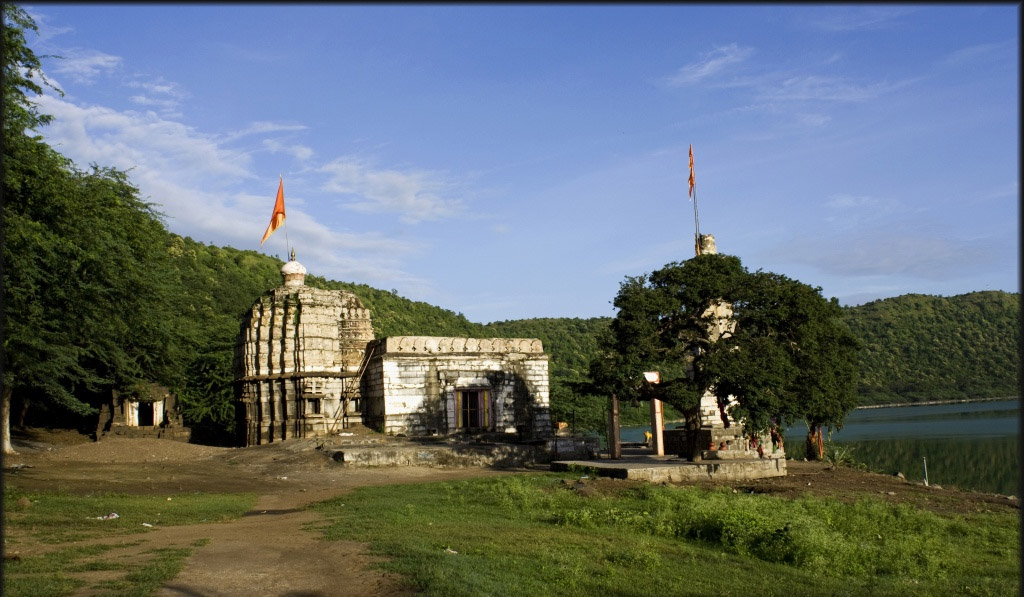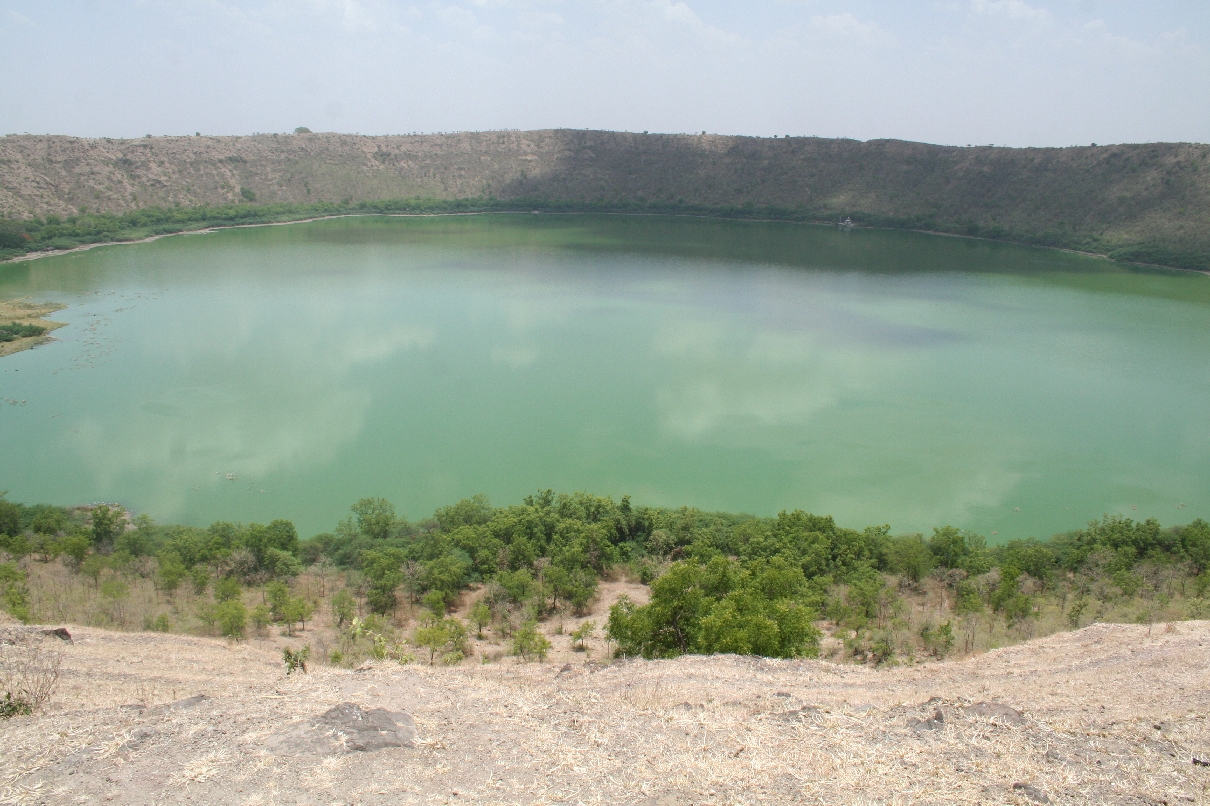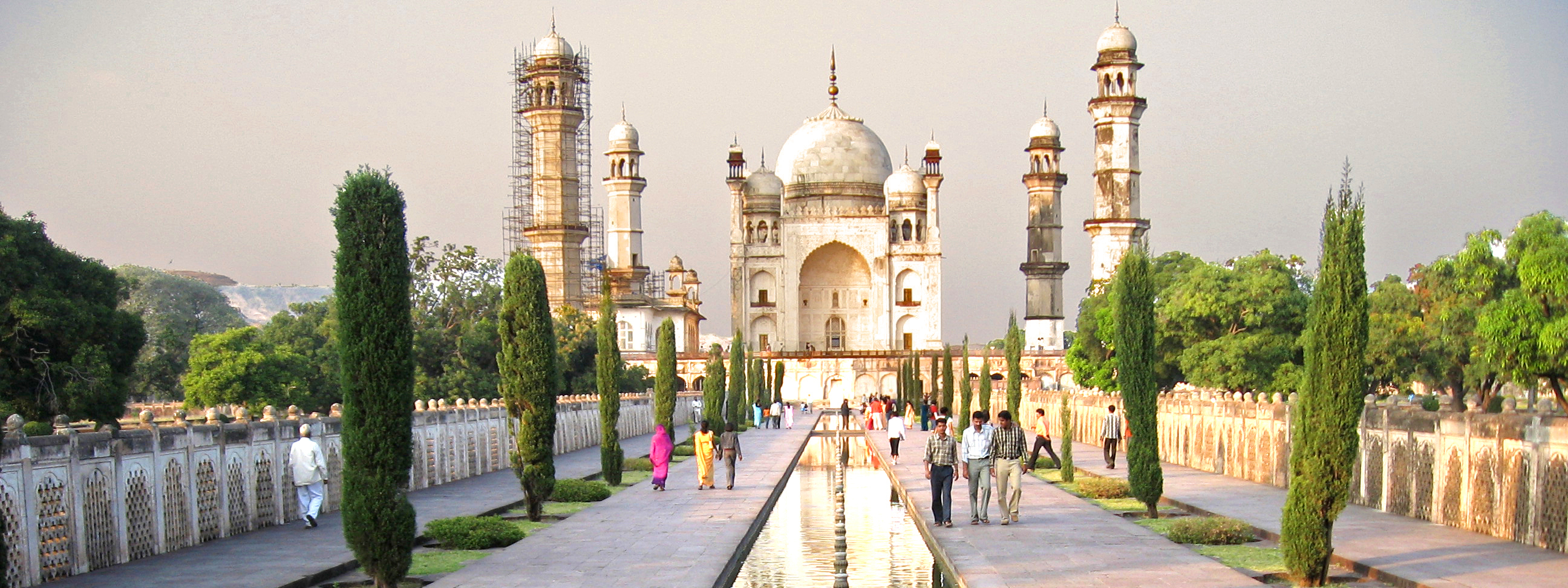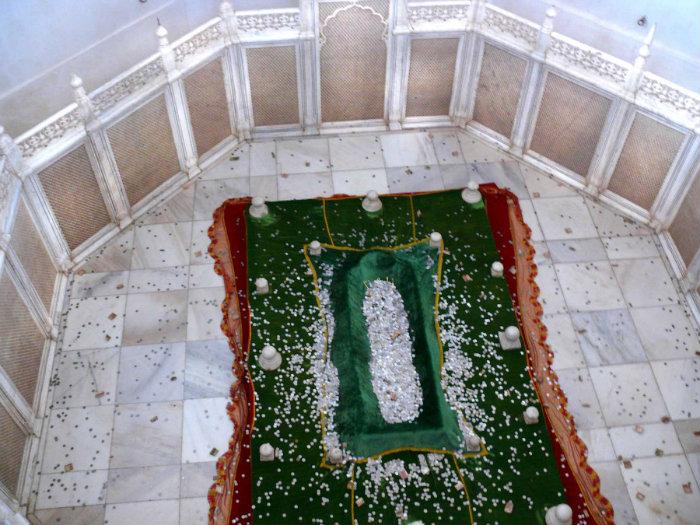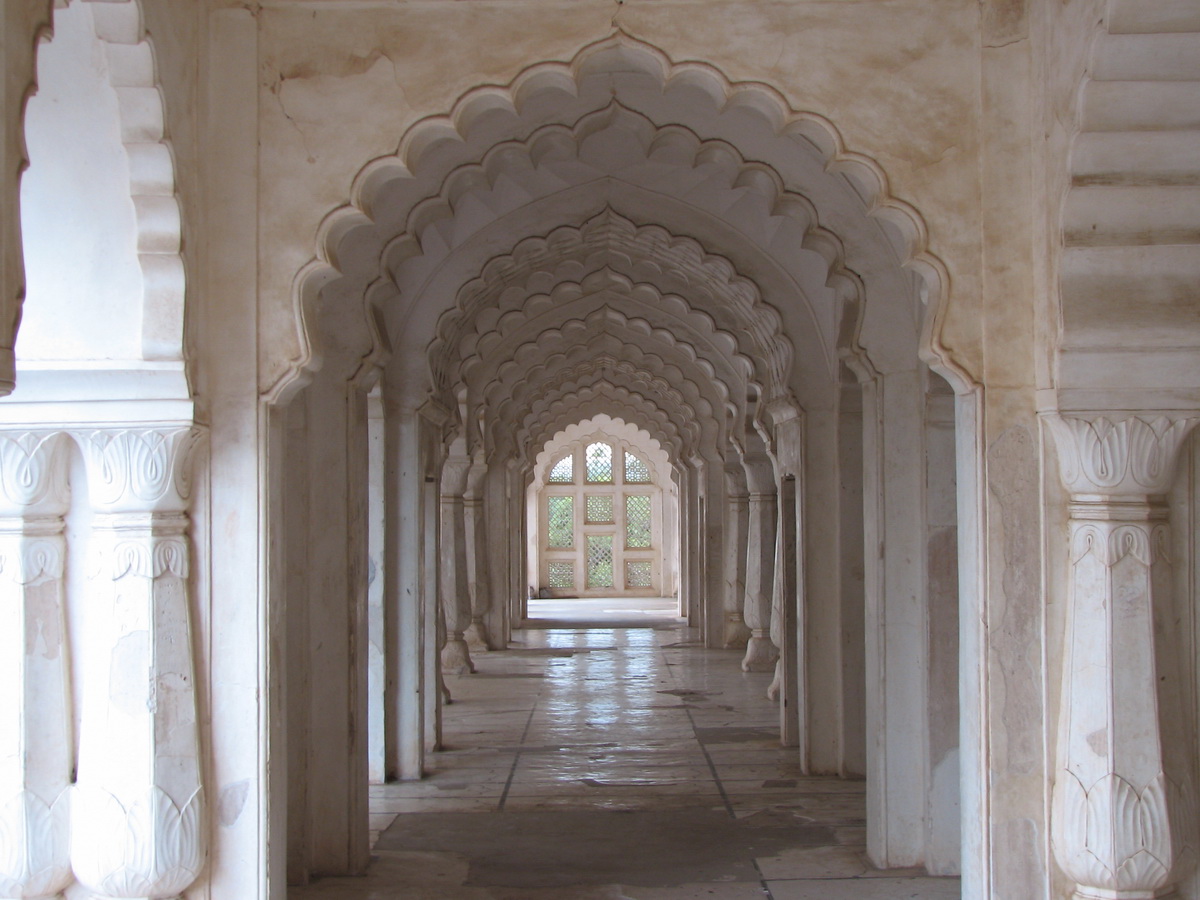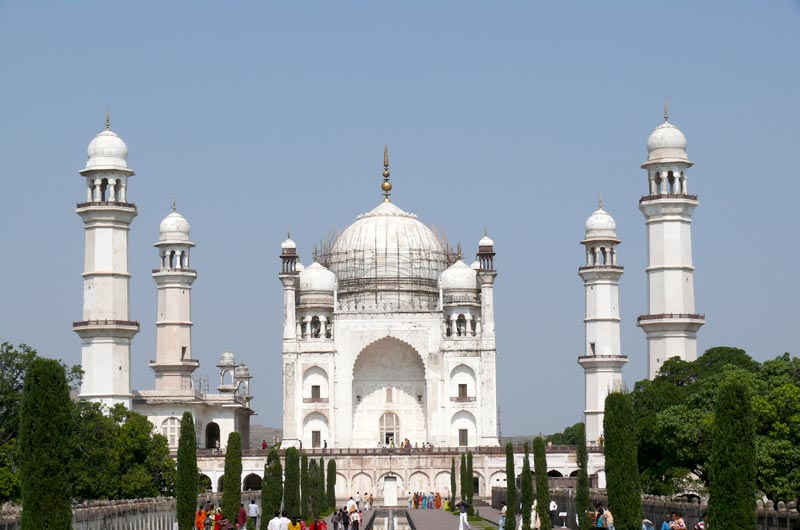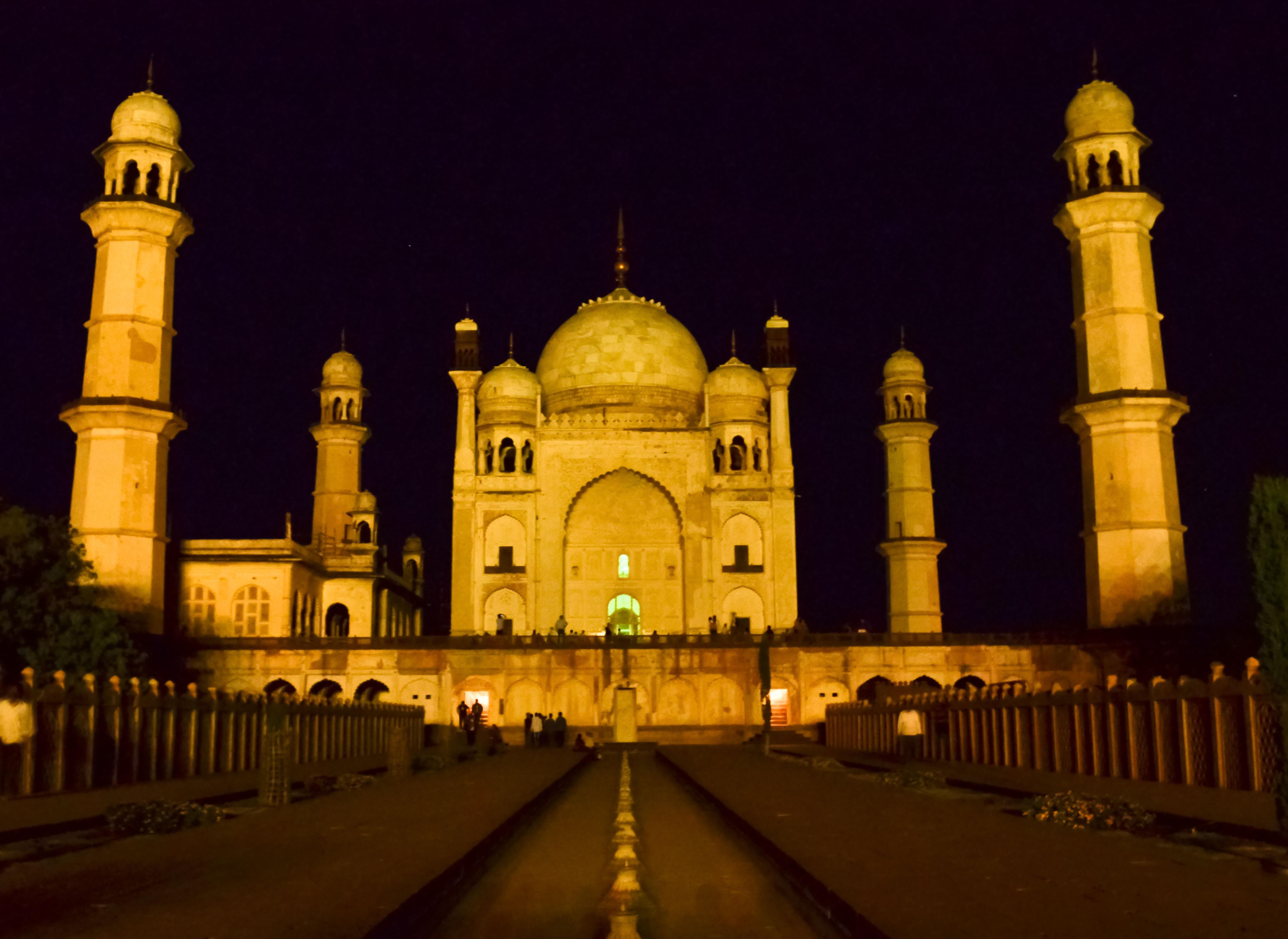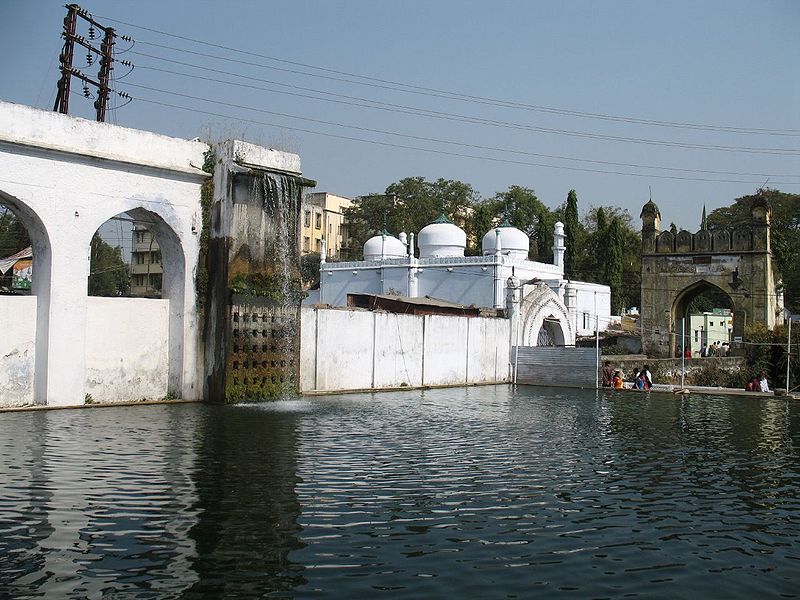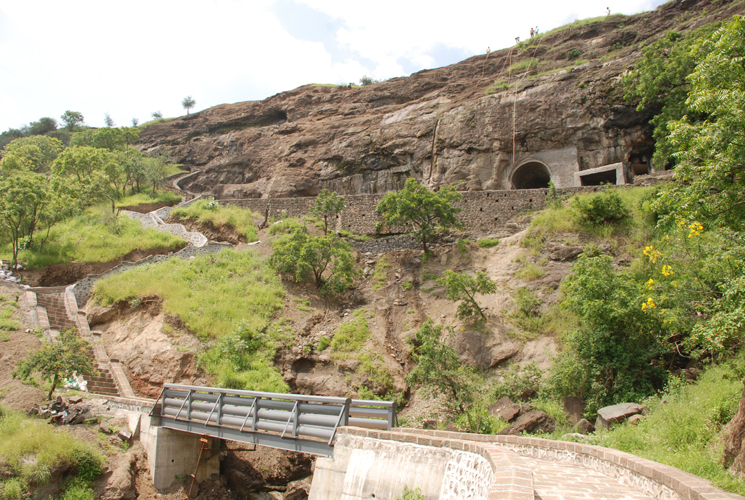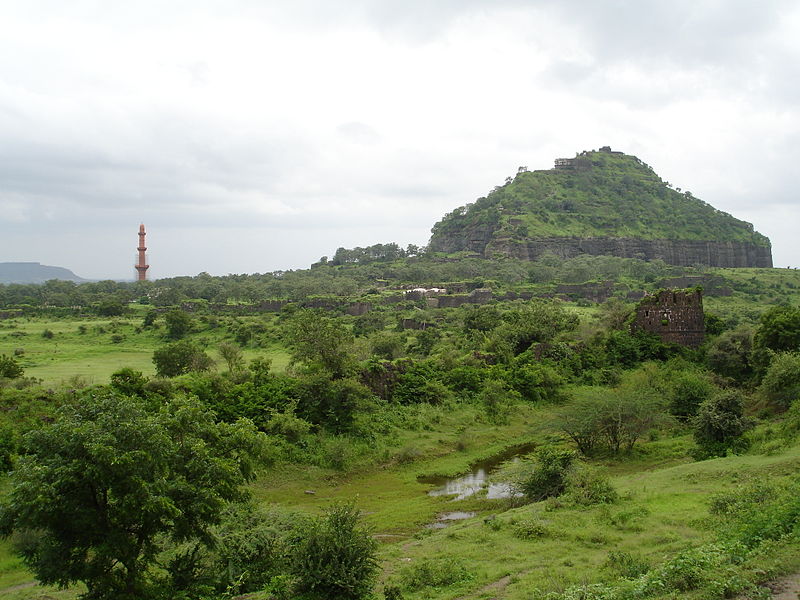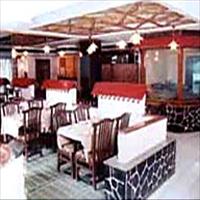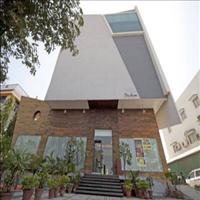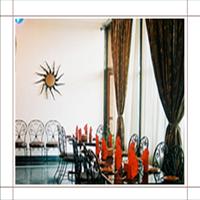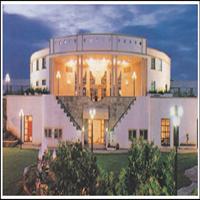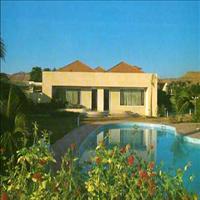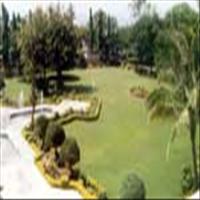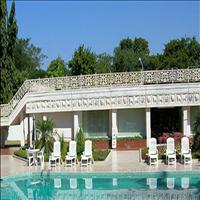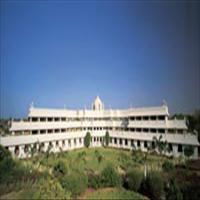Aurangabad
Travelers' Paradise
General Information
District: Aurangabad, State: Maharashtra, India
Area: 138.5 Sq. Km.
Languages Spoken: Marathi, Hindi, English and Urdu
Long Distance Code: +91-240
Importance: Nearest city to World heritage caves Ajanta and Ellora caves.
Best Time to Visit: November to February
Description
Aurangabad has always been an important city throughout the history of Maharashtra. The heritage of Aurangabad is linked with different rulers. Under royal dynasties such as the Satavahanas, Vakatakas, Chalukyas and Rashtrakutas, Aurangabad developed as a centre of culture and learning. Some famous poets, saints and philosophers like Dyaneshwar, Eknath and Ramdas, were born and preached in this region. <br />The city, originally called Khadke, or "Big Rock", was founded in the early 16th century by Malik Amber, a prime minister of the independent Muslim kingdom of the Nizam, based at Ahmadnagar, 112-km southwest to the city. The city rose to prominence towards the end of the 17th century, when Aurangazeb decamped here from Delhi to subdue the Marathas. After his death the city was renamed as Aurangabad in his honour. <br />Aurangabad has always been a prominent region on the Deccan plateau and has a long artistic and cultural history, to which several dynasties have made major contributions over the years. It was on the famous Silk route reaching Europe. Aurangabad has traces of settlements dating to the Stone Age and the remains of the cities of several dynasties. Textiles, embroidered finery and various kinds of beads made in nearby Paithan were exported to the markets of Greece, Rome and Egypt.<br />The importance of Aurangabad is great, owing to its proximity with world heritage sites of Ajanta and Ellora. Today it has become a great industrial town and also a big centre of education owing to the Dr. Babasaheb Ambedkar University.Location
Aurangabad, the capital city of the Marathwada region of Maharashtra, is located in the northern part of the state. It is 375 km from Mumbai. The city is surrounded by hills. The weather of Aurangabad is temperate with moderate winters (November-February) and summers (April-June). This region experiences good southwestern monsoon rains in June-September. River Kham passes through the city of Aurangabad.
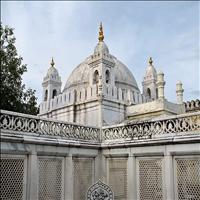 This small Muslim village of Khuldabad lies in between the Ellora caves and the Daulatabad Fort. It has temple with a unique idol of the huge famous Hindu Monkey God, Hanuman, in sleeping posture. Nearby is the grave of the great Mughal emperor, Aurangzeb. According to his will, his grave is in the simplest form and made of mud. Later in the 19th century, the Nizam of Hyderabad, gave it a small fence of marble.
This small Muslim village of Khuldabad lies in between the Ellora caves and the Daulatabad Fort. It has temple with a unique idol of the huge famous Hindu Monkey God, Hanuman, in sleeping posture. Nearby is the grave of the great Mughal emperor, Aurangzeb. According to his will, his grave is in the simplest form and made of mud. Later in the 19th century, the Nizam of Hyderabad, gave it a small fence of marble.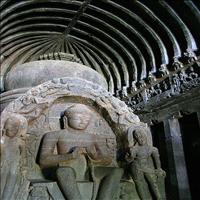 30 km away from Aurangabad in a small village of Verul, are the impressive Ellora caves. Intricately carved into the sides of a basaltic hill of the Sahyadri Mountain this world heritage site is one of the best examples of rock - cut caves in the whole world. It is the meeting point of three faiths, Buddhist, Jain and Hindu. There are 34 caves in all. 12 Buddhist (600 -800 A.D.), 17 Hindu (900A.D.) and 5 Jain caves (800 1000 A.D.).
30 km away from Aurangabad in a small village of Verul, are the impressive Ellora caves. Intricately carved into the sides of a basaltic hill of the Sahyadri Mountain this world heritage site is one of the best examples of rock - cut caves in the whole world. It is the meeting point of three faiths, Buddhist, Jain and Hindu. There are 34 caves in all. 12 Buddhist (600 -800 A.D.), 17 Hindu (900A.D.) and 5 Jain caves (800 1000 A.D.).
The Buddhist caves from number 1 to 12, out of which ten belong to the Mahayana sect and two to the Hinayana sect of Buddhism. They all are viharas, Monasteries .Cave number 10 contains gigantic Buddha figure in meditation, seated on a lion throne, flanked by attendants and flying figures. Some caves have the story of the miracle of Sravasti when Buddha assumed thousand forms. The sculpture in the Buddhist caves accurately convey the nobility, grace and serenity inherent in the Buddha.
The Hindu caves starting from cave number 13 are mostly dedicated to Lord Shiva. These caves have intricate carvings with minute details of the ornaments and clothes on the idols. But cave number 16 takes the cake. The most famous of all the Ellora caves is the Kailash cave. It is dedicated to lord Shiva and has many stories depicting the life of Shiva and therefore it has assumed the name of Kailash, the abode of Shiva. A figure of goddess Lakshmi seated on a lotus flower in water is shown at the entrance. Before that figures of Ganesh and Durga can be seen. The cave has huge Shivalingam on the first floor.
This lavishly carved cave has been cut from one rock and is world's largest monolithic cave. Moreover this stupendous edifice, was begun from the top of the rock and worked slowly down to the floor, creating gateway, courtyard, pavilion vestibule and tower along the way with beautiful figures. There are figures of Dashavataras of Vishnu, and panels of stories from the great epics of Ramayana and Mahabharata. An important figure of Lanka King Ravana, trying to shake the Kailash, is seen along with various mythological stories related to the life of Shiva, including his wedding with Parvati and Ardha-nari-nateshwar, when Lord Shiva assumed the form of half man and half woman.
Ellora, chiefly patronized by the Chalukya - Rashtrakuta rulers (7th - 10th century AD) are the testimony to the skills and imagination who built them. It took nearly 150 years to complete the Kailash cave with nearly 7000 labourers working round the clock.
The Jain caves can be seen as the amalgamation of Buddhist and the Hindu caves. There are some intricate carvings and painted frescoes in these caves.
The famous magnificent Yakshi statue and ceiling paintings are in cave number 32.
Ghrishneshwar temple: Within five minutes driving distance from the Ellora caves is the ancient temple of Ghrishneshwar. A superb example of medieval temple architecture, it is dedicated to Lord Shiva and is considered to be one of the most important 12 Shivalingam temples, the Jyotirlingas, of India. It has intricate carvings on the exterior and was renovated by Rani Ahillyabai Holkar, of Indore in the 17th century.
Closed On: Tuesday
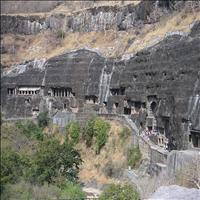 A two and half hour drive from Aurangabad takes you to the world heritage site of Ajanta. Although it is nearer to the cities of Jalgaon and Buldhana, Ajanta caves are better approached from Aurangabad. The caves are built in a horseshoe shaped curve of the steep rocky gorge that rises above the river Waghore. These rock hewn caves, still glowing in their own natural colours, are the finest achievements of the Buddhist monks who arrived here in 2nd century B.C. and reflect the zenith of ancient Indian art and architecture. Though most were carved in the first 400 years span, but the work continued till 7th century A.D. The caves were suddenly abandoned, most probably to the nearby Ellora caves. They remained unknown and forgotten for centuries, until, in 1819, soldiers from a British hunting party found them, accidentally.
A two and half hour drive from Aurangabad takes you to the world heritage site of Ajanta. Although it is nearer to the cities of Jalgaon and Buldhana, Ajanta caves are better approached from Aurangabad. The caves are built in a horseshoe shaped curve of the steep rocky gorge that rises above the river Waghore. These rock hewn caves, still glowing in their own natural colours, are the finest achievements of the Buddhist monks who arrived here in 2nd century B.C. and reflect the zenith of ancient Indian art and architecture. Though most were carved in the first 400 years span, but the work continued till 7th century A.D. The caves were suddenly abandoned, most probably to the nearby Ellora caves. They remained unknown and forgotten for centuries, until, in 1819, soldiers from a British hunting party found them, accidentally.
The exquisite paintings on the walls of the caves and some sculptures depict the development in Buddhism, over the span of eight centuries. The central theme of the frescoes remain the life and times of Buddha. Then there are descriptive Jataka tales, when Buddha assumed forms of animals on the earth in his previous births. There are lions, elephants, monkeys, peacocks and geese with human forms of 'Yakshas', 'Kinneras' (half human and half bird) 'Gandharvas' (divine musicians), 'Apsaras' (heavenly dancers), which were of concern to the people of that time. All of them decorated with intricacy. Their half-closed eyes giving an air of meditation.
The most important and better preserved caves are cave numbers 1, 2, 16, 17 and 19.
Cave 1:
The doorway has the most seen Ajanta frescoes of Padmapani and Vajrapani; celestial figures holding Lotus and Thunder bolt respectively in their hands. A court scene, from the Mahajanaka Jataka is depicted here. The Ummaga Jataka and the Champeya Jataka are shown in this cave. Interesting in these frescoes is the head gear of Bodhisattva Avalokiteshwara and the ornaments, clothes hairstyles and the purses carried by the womenfolk. They are drawn and coloured with minute intricacy showing the caliber of the artisans.
Cave 2:
In cave number 2 Buddhist icons were sculpted according to a set of codified rules that used symbolic hand gestures and motifs such as the wheel, the deer, the throne and sacred Bodhi tree. Each represents a stage of Buddha's life. The ceiling and wall paintings illustrate events associated with Buddha's birth including Maya, Buddha's mother. There are many paintings in this cave where the human figures are dressed differently than those of the others. Others are the tales from the Vidhurpandita Jataka.
Cave 16:
In between cave number 2 and 16 are many caves depicting the miracle of Sravasti. A special painting known as the "dying princess" adorns one wall of the cave. This shows Sundari, the wife of Buddha's half-brother, dying when she is told that her husband was going to become a monk. There are many female attendants besides her, one being a nurse. Astonishingly enough, the nurse is shown wearing the same uniform as of today.
Cave 17:
Stories from the Vishvantara Jataka and the Hamsa Jataka can be found here. One fresco shows Buddha preaching, with his right hand raised and palm facing the viewer, in posture of blessing. Buddha is shown seated in Padmasana- the lotus pose of meditation and is often shown with his hair tied in a topknot surrounded by a halo of light, representing nirvana or enlightenment. Another touching fresco is depicted in this cave when Buddha came back to Kapilavastu after enlightenment. He is shown with his wife Yashodhara and son Rahul. Here the figure of Buddha is tall and his wife and son look like dwarfs in from him, depicting his knowledge and prominence.
Cave 19:
Just like the caves in Ellora, all the caves in Ajanta are Monolithic and carved from top to bottom. This cave carries huge Stupa structure with Buddha seated in it and celestial figures flying over it.
Cave 26:
Last of the caves which is intricately decorated and carved. The main sculpture here is that of the sleeping Buddha. It is the legend of his Mahanirvana; i.e. his death. While normal humans are seen mourning below, the celestial figures in the heaven are seen rejoicing.
Ajanta is being restored with the same natural colours that were used, where they have been faded.
Closed On: Monday
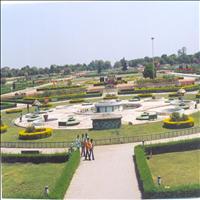 Situated 56 km south of Aurangabad, this ancient town today famous for its Paithani Silk Sarees, was once a famous seat of learning. This ancient capital city, of the Satvahanas, established by Shalivahan in A.D. 78, was known as Pratishthan. Situated on the banks of Godavari River, Paithan is an important point for Hindu pilgrimage. Today, it is also an important excavation site. Centuries ago, the famous Marathi poet - saint, Eknath lived here. \r\nApart from the picturesque bathing ghats in Paithan, there are many places worth a visit. The Jayakwadi dam on the river Godavari is huge dam and the water collected is called the Nath Sagar which helps in the irrigation of few hectares of the nearby land. Many migratory birds frequent this place and are a treat for nature lovers. The house of the famous saint Eknath has been now converted into a temple and family of his descendants still live in one part of that three century old house. There is a beautiful well maintained garden near the Dam, named the Dnyaneshwar Udyan. It is full of greenery, flowers and fountains and has been developed on the lines of the Vrindavan Gardens of Mysore.\r\nThe silk saris produced here are world famous as Paithani and have been worn by Marathi women for past many centuries. A visit to the handloom weaving centre of saris is exciting and one can also order a customised Paithani sari.\r\n
Situated 56 km south of Aurangabad, this ancient town today famous for its Paithani Silk Sarees, was once a famous seat of learning. This ancient capital city, of the Satvahanas, established by Shalivahan in A.D. 78, was known as Pratishthan. Situated on the banks of Godavari River, Paithan is an important point for Hindu pilgrimage. Today, it is also an important excavation site. Centuries ago, the famous Marathi poet - saint, Eknath lived here. \r\nApart from the picturesque bathing ghats in Paithan, there are many places worth a visit. The Jayakwadi dam on the river Godavari is huge dam and the water collected is called the Nath Sagar which helps in the irrigation of few hectares of the nearby land. Many migratory birds frequent this place and are a treat for nature lovers. The house of the famous saint Eknath has been now converted into a temple and family of his descendants still live in one part of that three century old house. There is a beautiful well maintained garden near the Dam, named the Dnyaneshwar Udyan. It is full of greenery, flowers and fountains and has been developed on the lines of the Vrindavan Gardens of Mysore.\r\nThe silk saris produced here are world famous as Paithani and have been worn by Marathi women for past many centuries. A visit to the handloom weaving centre of saris is exciting and one can also order a customised Paithani sari.\r\n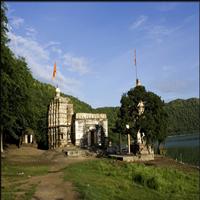 About 50,000 years ago a huge meteorite hit the earth near this place known as Lonar, with the force of 6 Mega Ton bombs, creating a crater of 1830 meters in diameter and 150 meters deep. This is the only lake in the world formed by meteorite impact in basaltic rock. Around 165 km from Aurangabad, this place is an ecological wonder. The water of this lake is saline as well as alkaline. There are many temples on the banks of this lake and are known as Yadav Temples. These temples are called the Hemadpanti temples as they are built by Hemadri, who was a military general of the Yadav period. There are altogether thirty-two temples, seventeen monuments, thirteen kundas/lakes and four inscriptions at Lonar. They all belong to the Yadav and the medieval periods. These eight hundred year old temples have been the subject of serious study.
About 50,000 years ago a huge meteorite hit the earth near this place known as Lonar, with the force of 6 Mega Ton bombs, creating a crater of 1830 meters in diameter and 150 meters deep. This is the only lake in the world formed by meteorite impact in basaltic rock. Around 165 km from Aurangabad, this place is an ecological wonder. The water of this lake is saline as well as alkaline. There are many temples on the banks of this lake and are known as Yadav Temples. These temples are called the Hemadpanti temples as they are built by Hemadri, who was a military general of the Yadav period. There are altogether thirty-two temples, seventeen monuments, thirteen kundas/lakes and four inscriptions at Lonar. They all belong to the Yadav and the medieval periods. These eight hundred year old temples have been the subject of serious study.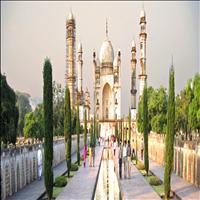 Although known as the Taj Mahal of the south, this replica of the Taj fails to create that magic of the actual Taj. It is a mausoleum built in memory of Aurangzeb's wife Rabia-ud-Daurani Begum by his son Prince Azam Shah, in 1678. Built at the centre of the garden, it is a fine piece of Mughal architecture in the Deccan region with four towering minarets framing the central tomb, distinguished by elaborate surface ornamentation and intricately perforated marble screens. The inlay decorations of flowers and creepers are beautiful.
Although known as the Taj Mahal of the south, this replica of the Taj fails to create that magic of the actual Taj. It is a mausoleum built in memory of Aurangzeb's wife Rabia-ud-Daurani Begum by his son Prince Azam Shah, in 1678. Built at the centre of the garden, it is a fine piece of Mughal architecture in the Deccan region with four towering minarets framing the central tomb, distinguished by elaborate surface ornamentation and intricately perforated marble screens. The inlay decorations of flowers and creepers are beautiful.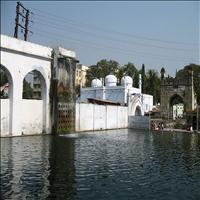 Very near to the Maqbara, is the Panchakki, means a water mill. It was built in 1624 to honour the memory of a Sufi saint and the spiritual mentor of Aurangzeb, Baba Shah Musafir, whose grave lies besides. The physics of this water mill is unique which was designed to generate energy via water, brought down from a spring on a mountain, located 8 km away. The energy generated was further used to turn the large grinding stones of the flour mill which used to grind grain for the pilgrims.
Very near to the Maqbara, is the Panchakki, means a water mill. It was built in 1624 to honour the memory of a Sufi saint and the spiritual mentor of Aurangzeb, Baba Shah Musafir, whose grave lies besides. The physics of this water mill is unique which was designed to generate energy via water, brought down from a spring on a mountain, located 8 km away. The energy generated was further used to turn the large grinding stones of the flour mill which used to grind grain for the pilgrims.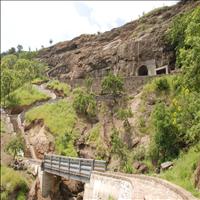 Just outside the city, lie the Aurangabad caves, excavated between the 2nd and 6th century AD. Tantric influences can be discerned in their architecture and iconography. There are twelve caves in all, a major chunk of which are viharas, of which Caves 3 and 7, are the most fascinating ones. Cave 3 stands supported by 12 finely carved columns, and sports sculptures portraying scenes from the Jataka tales. Cave 7 houses an imposing sculpture of a Boddhisattva, praying for deliverance.\r\nSome of the chaityas are constructed on a mandala plan for the circumambulation of the Buddha who is depicted here seated on an intricately carved throne. One is also treated to a panoramic view of the city as well as the imposing Maqbara from this point.\r\n
Just outside the city, lie the Aurangabad caves, excavated between the 2nd and 6th century AD. Tantric influences can be discerned in their architecture and iconography. There are twelve caves in all, a major chunk of which are viharas, of which Caves 3 and 7, are the most fascinating ones. Cave 3 stands supported by 12 finely carved columns, and sports sculptures portraying scenes from the Jataka tales. Cave 7 houses an imposing sculpture of a Boddhisattva, praying for deliverance.\r\nSome of the chaityas are constructed on a mandala plan for the circumambulation of the Buddha who is depicted here seated on an intricately carved throne. One is also treated to a panoramic view of the city as well as the imposing Maqbara from this point.\r\n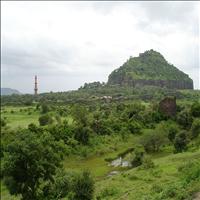 Just 13 km from Aurangabad, we can see a massive hill fortress, the Daulatabad fort. This impressive fortress, once known as 'Devgiri', the hill of the Gods was built in the 12th century by Bhillama, the king of the Yadav dynasty. It was named Daulatabad, the city of fortune, by Mohammed Bin Tughlaq, Sultan of Delhi. A 5 km massive wall, artificial scarping, spiked gates, dungeons and a variety of complicated defence systems made it almost invincible and was over powered only through bribery. A magnificent 60 mt high tower of victory, known as the Chand Mahal was added in 1435. \r\nHigher up is the blue-tiled Chini Mahal where the last king of Golconda was imprisoned for 13 years until his death. On the top is a huge 6 m cannon cast in five metals with Aurangzeb's name inscribed on it.
Just 13 km from Aurangabad, we can see a massive hill fortress, the Daulatabad fort. This impressive fortress, once known as 'Devgiri', the hill of the Gods was built in the 12th century by Bhillama, the king of the Yadav dynasty. It was named Daulatabad, the city of fortune, by Mohammed Bin Tughlaq, Sultan of Delhi. A 5 km massive wall, artificial scarping, spiked gates, dungeons and a variety of complicated defence systems made it almost invincible and was over powered only through bribery. A magnificent 60 mt high tower of victory, known as the Chand Mahal was added in 1435. \r\nHigher up is the blue-tiled Chini Mahal where the last king of Golconda was imprisoned for 13 years until his death. On the top is a huge 6 m cannon cast in five metals with Aurangzeb's name inscribed on it.Buddhist Pilgrimage Tour of India / PI-0129 (12 Days / 11 Nights)
Mumbai-Aurangabad-Mumbai-Bhopal-Agra-Varanasi-Bodhgaya-Rajgir-Nalanda-Patna-Delhi
From the Stupa of Sanchi to the ruins of Nalanda and the ultimate caves of Ellora and Ajanta; Buddha's preachings reached all over in India through the art form. This tour takes you from the Ajanta caves which were created nearly thousand years after the nirwana of Lord Buddha to the place where he attained his enlightenment.
Detailed Itinerary
Day 1 : Mumbai
Day 2 : Mumbai - Aurangabad
Day 3 : Aurangabad
Day 4 : Aurangabad-Mumbai-Bhopal
Day 5 : Bhopal
Day 6 : Bhopal - Agra
Day 7 : Agra - Varanasi
Day 8 : Varanasi
Day 9 : Varanasi - Bodhgaya
Day 10 : Bodhgaya
Day 11 : Bodhgaya-Rajgir-Nalanda-Patna
Day 12 : Patna-Delhi
Mumbai-Aurangabad-Mumbai-Bhopal-Agra-Varanasi-Bodhgaya-Rajgir-Nalanda-Patna-Delhi
From the Stupa of Sanchi to the ruins of Nalanda and the ultimate caves of Ellora and Ajanta; Buddha's preachings reached all over in India through the art form. This tour takes you from the Ajanta caves which were created nearly thousand years after the nirwana of Lord Buddha to the place where he attained his enlightenment.
Detailed Itinerary
Day 1 : Mumbai
Day 2 : Mumbai - Aurangabad
Day 3 : Aurangabad
Day 4 : Aurangabad-Mumbai-Bhopal
Day 5 : Bhopal
Day 6 : Bhopal - Agra
Day 7 : Agra - Varanasi
Day 8 : Varanasi
Day 9 : Varanasi - Bodhgaya
Day 10 : Bodhgaya
Day 11 : Bodhgaya-Rajgir-Nalanda-Patna
Day 12 : Patna-Delhi
Daman with Mumbai and Aurangabad / PI-023 (10 Days / 9 Nights)
Mumbai-Daman-Mumbai-Aurangabad-Mumbai
Casuarinas windbreaks, placid blue seas, idyllic beaches, sleepy villages and a long history; Daman with all this and proximity to the big metropolis, Mumbai, is a beautiful getaway. So near to Mumbai and yet so far from its maddening crowds, this quaint town with slow pace has its own charm. Mumbai is the city of dreams and Aurangabad is full of ancient and medieval historical places. Three put together equals to a wonderful tour.
Detailed Itinerary
Day 1 : Mumbai
Day 2 : Mumbai
Day 3 : Mumbai - Daman
Day 4 : Daman
Day 5 : Daman
Day 6 : Daman
Day 7 : Daman
Day 8 : Daman - Mumbai - Aurangabad
Day 9 : Aurangabad
Day 10 : Aurangabad - Mumbai
Mumbai-Daman-Mumbai-Aurangabad-Mumbai
Casuarinas windbreaks, placid blue seas, idyllic beaches, sleepy villages and a long history; Daman with all this and proximity to the big metropolis, Mumbai, is a beautiful getaway. So near to Mumbai and yet so far from its maddening crowds, this quaint town with slow pace has its own charm. Mumbai is the city of dreams and Aurangabad is full of ancient and medieval historical places. Three put together equals to a wonderful tour.
Detailed Itinerary
Day 1 : Mumbai
Day 2 : Mumbai
Day 3 : Mumbai - Daman
Day 4 : Daman
Day 5 : Daman
Day 6 : Daman
Day 7 : Daman
Day 8 : Daman - Mumbai - Aurangabad
Day 9 : Aurangabad
Day 10 : Aurangabad - Mumbai
Karnataka With Buddhist Tour / PI-0269 (15 Days / 14 Nights)
Mumbai-Aurangabad-Mumbai-Hyderabad-Gulbarga-Bijapur-Badami-Hospet-Hassan-Mysore-Bengaluru
This Buddhist tour of Karnataka takes you across the several Buddhist pilgrimage sites of the state that are considered to be important historical pieces of Indian history too. Starting from Aurangabad, the tour takes you across the scenic cities of Gulbarga, Bijapur, Badami, Hospet, the palace city of Mysore and finally ending with the fast moving yet laid back city of Bengaluru.
Detailed Itinerary
Day 1 : Mumbai
Day 2 : Mumbai
Day 3 : Mumbai - Aurangabad
Day 4 : Aurangabad - Mumbai
Day 5 : Mumbai-Hyderabad
Day 6 : Hyderabad - Gulbarga
Day 7 : Gulbarga - Bijapur
Day 8 : Bijapur - Badami
Day 9 : Badami - Hospet
Day 10 : Hospet
Day 11 : Hospet - Hassan
Day 12 : Hassan - Mysore
Day 13 : Mysore
Day 14 : Mysore - Bengaluru
Day 15 : Bengaluru
Mumbai-Aurangabad-Mumbai-Hyderabad-Gulbarga-Bijapur-Badami-Hospet-Hassan-Mysore-Bengaluru
This Buddhist tour of Karnataka takes you across the several Buddhist pilgrimage sites of the state that are considered to be important historical pieces of Indian history too. Starting from Aurangabad, the tour takes you across the scenic cities of Gulbarga, Bijapur, Badami, Hospet, the palace city of Mysore and finally ending with the fast moving yet laid back city of Bengaluru.
Detailed Itinerary
Day 1 : Mumbai
Day 2 : Mumbai
Day 3 : Mumbai - Aurangabad
Day 4 : Aurangabad - Mumbai
Day 5 : Mumbai-Hyderabad
Day 6 : Hyderabad - Gulbarga
Day 7 : Gulbarga - Bijapur
Day 8 : Bijapur - Badami
Day 9 : Badami - Hospet
Day 10 : Hospet
Day 11 : Hospet - Hassan
Day 12 : Hassan - Mysore
Day 13 : Mysore
Day 14 : Mysore - Bengaluru
Day 15 : Bengaluru
Aurangabad, India Tours

